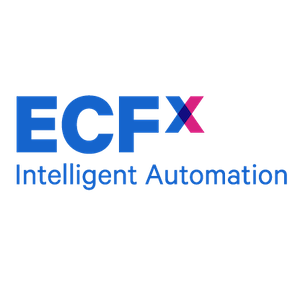Description

CourtFileNow

Doxpop
Comprehensive Overview: CourtFileNow vs Doxpop
CourtFileNow and Doxpop are two services providing access to court-related information and services with different focuses and functionalities.
a) Primary Functions and Target Markets:
- CourtFileNow:
- Primary Functions:
- CourtFileNow primarily serves as an electronic filing system that allows attorneys and self-represented litigants to manage and file court documents electronically.
- The platform is designed to streamline the court filing process, improve efficiency, and reduce the need for physical paper handling in court systems.
- Target Markets:
- Its primary users include legal professionals, such as attorneys and paralegals, as well as individuals who are self-representing in legal proceedings.
- It targets court systems looking to modernize and make their processes more efficient through technology.
- Primary Functions:
- Doxpop:
- Primary Functions:
- Doxpop provides online access to court records, public records, and other legal documentation. Users can search and retrieve records from various courts.
- It also offers notification services for changes in court records and easy access to recorded documents.
- Target Markets:
- Primarily targets legal professionals, including lawyers, legal researchers, and paralegals who require regular access to court documents and records.
- Journalists, businesses, and private individuals with interest or need for public record access may also use the service.
- Primary Functions:
b) Market Share and User Base Comparison:
- CourtFileNow largely serves specific jurisdictions aiming to transition to electronic filing, meaning its market share is based more on geographical and administrative agreements with courts rather than direct consumer choice. Its user base tends to be concentrated among legal professionals active in its operating regions.
- Doxpop likely has a broader market share because it operates in multiple counties and states, offering access to a wide range of public records and court documents. Its user base includes a diverse range of individuals and professionals seeking access to public and legal records.
Actual market share data and user statistics may not be publicly available, but both services cater to overlapping yet distinct needs in the legal and public records space.
c) Key Differentiating Factors:
-
Services Offered:
- CourtFileNow is focused on streamlining the process of filing court documents online, reducing paperwork, and enhancing the efficiency of submissions.
- Doxpop centers around providing comprehensive access to court records and maintaining public record transparency.
-
Target Audience:
- CourtFileNow caters more directly to attorneys and legal professionals engaged in active cases requiring document submission to courts.
- Doxpop serves a broader audience that extends beyond just legal practitioners to include anyone needing access to public court records.
-
Geographical Availability:
- CourtFileNow’s usability is restricted to jurisdictions that have adopted its filing service, whereas Doxpop offers services in multiple locations where it provides public and court record information.
-
Technology and Integration:
- CourtFileNow focuses more on integration with court management systems to enable seamless e-filing.
- Doxpop provides a platform for searching and retrieving public records, focusing more on user accessibility rather than integration with filing systems.
In summary, the two systems complement each other in the legal technology space, with CourtFileNow enhancing the filing process and Doxpop broadening access to public records.
Contact Info

Year founded :
Not Available
Not Available
Not Available
United States
http://www.linkedin.com/company/courtfilego

Year founded :
Not Available
Not Available
Not Available
Not Available
Not Available
Feature Similarity Breakdown: CourtFileNow, Doxpop
As of my last update, CourtFileNow and Doxpop are both platforms designed to facilitate access to court records and manage various legal documents. While they share a common goal of easing the process of handling legal data, there are distinct differences in their features, user interfaces, and unique offerings. Here's a breakdown based on typical characteristics of such platforms:
a) Core Features in Common
-
Document Access: Both platforms provide users with the ability to access and retrieve court records and legal documents. This includes filings, case details, and other related documents.
-
Court Filings: They often include features that allow users to file documents electronically with courts, streamlining the filing process for attorneys and legal staff.
-
Case Management: They offer tools to manage and track cases, ensuring that users can monitor the progress and status of their cases efficiently.
-
Search Functionality: Both platforms typically offer comprehensive search functions, enabling users to find specific cases or documents quickly.
-
Notifications and Alerts: Users can generally set up notifications for updates on certain cases or filings, ensuring timely awareness of important changes or deadlines.
b) User Interface Comparison
-
Intuitiveness: Both platforms aim for user-friendly interfaces, but the specific layout and design can vary. CourtFileNow might focus on a more streamlined dashboard for quick filing, while Doxpop could offer more detailed search and filtering options.
-
Navigation: Navigation in these platforms often reflects their primary focus—CourtFileNow might optimize for frequent filers with quick access to recent cases, while Doxpop might prioritize robust search capabilities for users looking to delve into detailed case histories.
-
Mobile Accessibility: Both platforms likely offer mobile compatibility, but the ease of use and functionality on mobile devices could differ based on the specific design and optimization choices each has made.
c) Unique Features
-
CourtFileNow: It might offer distinct features tailored more closely to frequent filers, such as batch filing capabilities or enhanced integrations with specific court systems to streamline the process further for legal firms that handle high volumes of filings.
-
Doxpop: This platform could distinguish itself with more expansive public record searches, including not just court documents but also integrating with other public record databases, providing a broader spectrum of information for users who need comprehensive data access.
Conclusion
Both CourtFileNow and Doxpop serve important roles in legal document management and court filing processes. Their core features align on fundamental tasks, but each may offer unique enhancements aimed at meeting different user needs or preferences. Specific details about their offerings can vary over time, so consulting the most recent resources or product demos from each service would provide a clearer picture of their current capabilities.
Features

Not Available

Not Available
Best Fit Use Cases: CourtFileNow, Doxpop
CourtFileNow and Doxpop are both services that cater to legal professionals and related industries, but each has its own distinct offerings that make them suitable for specific use cases:
CourtFileNow
a) Best Fit Use Cases:
-
Law Firms and Legal Departments: CourtFileNow is primarily designed for law firms and legal departments that require a streamlined process for filing legal documents electronically with courts. It is particularly useful for firms that deal with a high volume of cases and need an efficient way to manage filings and track case progress.
-
Pro Se Litigants: For individuals representing themselves in legal proceedings (pro se litigants), CourtFileNow provides an accessible platform to file documents without needing legal representation. This is especially valuable in jurisdictions that allow or encourage electronic filing for self-represented parties.
-
Courts and Judicial Entities: Some court systems might choose CourtFileNow to improve their e-filing capabilities, making the filing process more efficient for both court staff and those submitting documents.
d) Industry Verticals and Company Sizes:
CourtFileNow caters mainly to the legal industry, including individual practitioners, small to mid-sized law firms, and larger legal departments within corporations. The platform's scalability can accommodate a variety of case loads, making it adaptable for different sizes of legal practices.
Doxpop
b) Preferred Use Cases:
-
Title Search and Real Estate Professionals: Doxpop is often used by professionals who need access to public records for title searches, lien searches, and other real estate-related research. It provides comprehensive access to a variety of public documents, making it essential for detailed due diligence.
-
Private Investigators: PI firms can benefit from Doxpop's extensive databases when conducting background checks, locating individuals, or gathering court records for investigative purposes.
-
Businesses Requiring Background Checks: Companies that regularly conduct background checks for employment screening or other due diligence processes can leverage Doxpop's databases to access court records and other relevant public information.
d) Industry Verticals and Company Sizes:
Doxpop services a wider array of industry verticals beyond the legal field, including real estate, private investigation, and any business that requires robust access to public records. Due to its expansive database, it is suitable for both small businesses and larger corporations that need extensive public record searches as part of their operations.
In summary, CourtFileNow is predominantly geared toward legal professionals needing efficient electronic filing capabilities, while Doxpop serves a broader range of industries requiring access to public records. Each tool serves different needs within the legal and investigative landscape, accommodating various company sizes and industry requirements.
Pricing

Pricing Not Available

Pricing Not Available
Metrics History
Metrics History
Comparing undefined across companies
Conclusion & Final Verdict: CourtFileNow vs Doxpop
In evaluating CourtFileNow and Doxpop, it is crucial to assess their features, cost, usability, and customer support to determine which offers the best overall value.
Conclusion and Final Verdict
a) Best Overall Value: Considering all factors, Doxpop seems to offer the best overall value. It is known for its comprehensive coverage of court records and user-friendly interface. The flexibility in subscription plans and widespread availability across many states enhances its appeal to a broader range of users.
b) Pros and Cons:
CourtFileNow:
- Pros:
- Streamlined interface tailored specifically for e-filing solutions.
- Efficient for jurisdictions where it is integrated into the court system.
- Offers specialized services which can be beneficial for legal professionals focused on specific areas.
- Cons:
- Limited geographical reach as it is not available in all states.
- May not provide as expansive access to court records as Doxpop.
- Could be perceived as less versatile for users seeking broader records access.
Doxpop:
- Pros:
- Extensive database with a wide range of court records.
- Available in multiple states, making it more versatile.
- Flexible subscription models catering to different user needs.
- Cons:
- Some users might find the expansive database overwhelming.
- Potentially higher cost for those needing only basic services or in areas where records overlap with free public access.
c) Specific Recommendations:
-
For Users in Specific Jurisdictions Needing E-filing: CourtFileNow may be more beneficial for users whose primary need is efficient e-filing within supported jurisdictions. Check local access and integration with your specific court systems to determine its suitability.
-
For Users Seeking Comprehensive Record Access: Doxpop is better suited for users who require extensive access to court records across multiple states. Its user-friendly interface and range of information make it ideal for users like researchers, law firms, and businesses requiring broad insights.
Ultimately, the choice between CourtFileNow and Doxpop should be guided by the specific needs of the user, considering geographic coverage, the nature of use (focusing on e-filing or record retrieval), and budget constraints. Trial periods or demos could assist in making a well-informed decision.
Add to compare
Add similar companies



